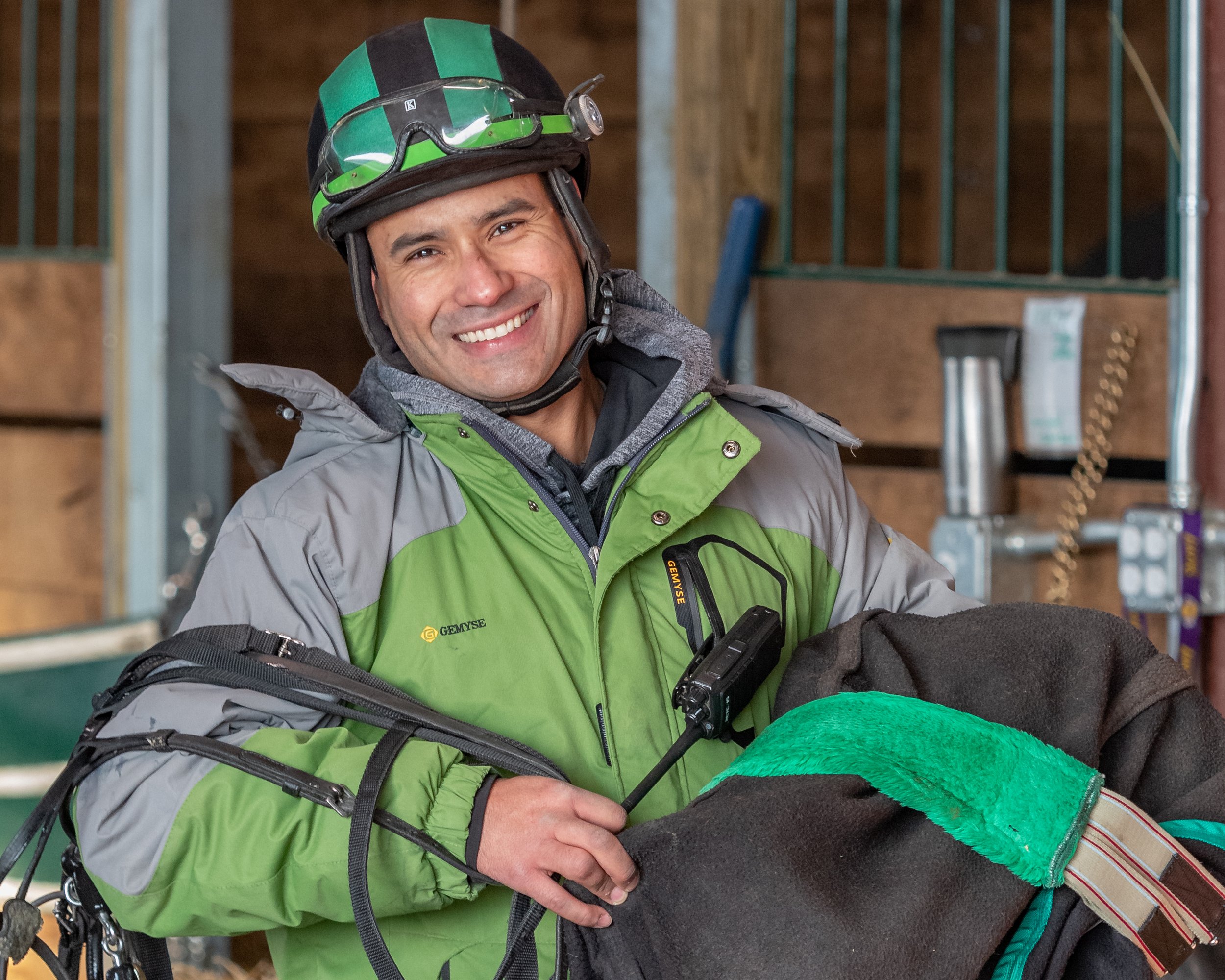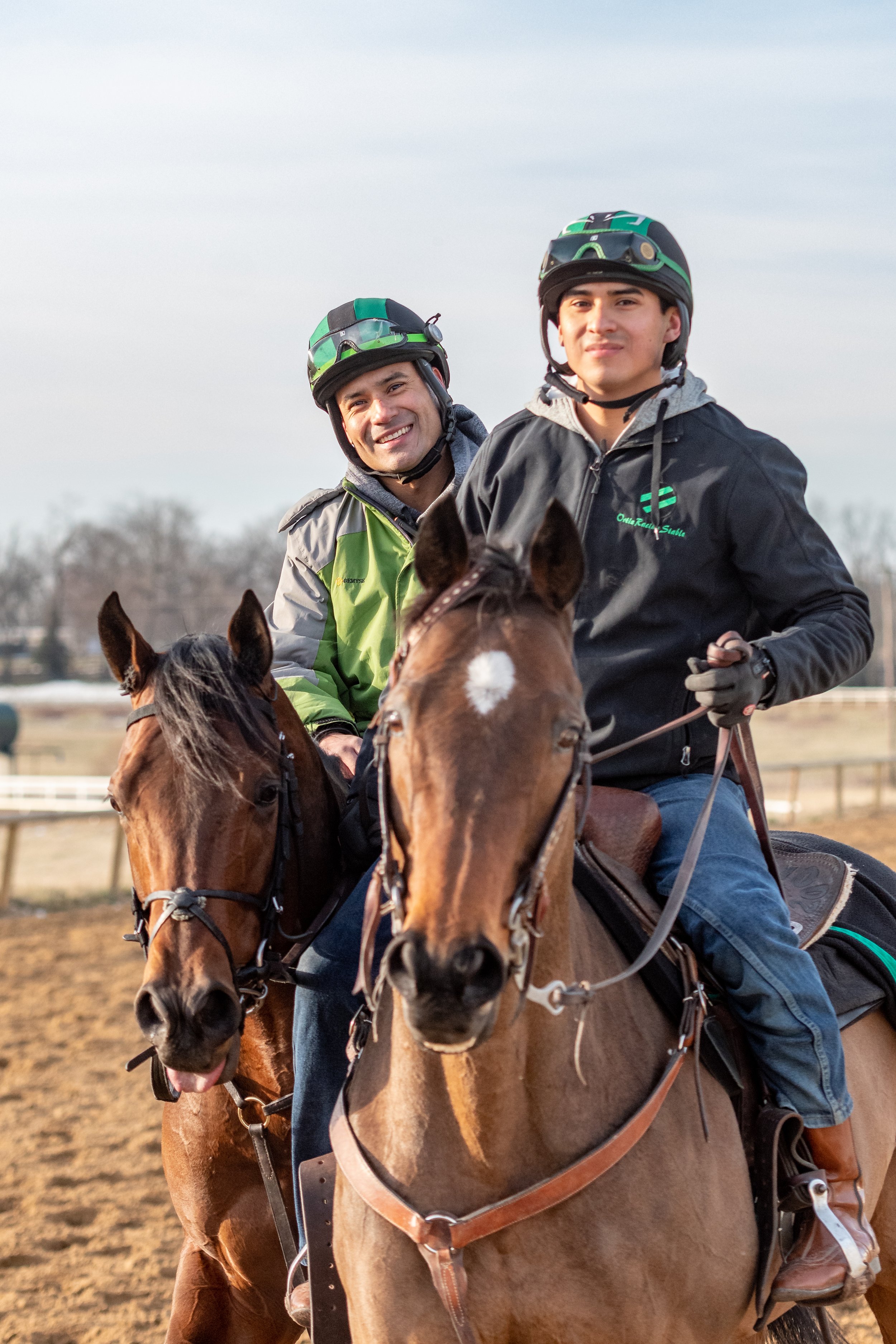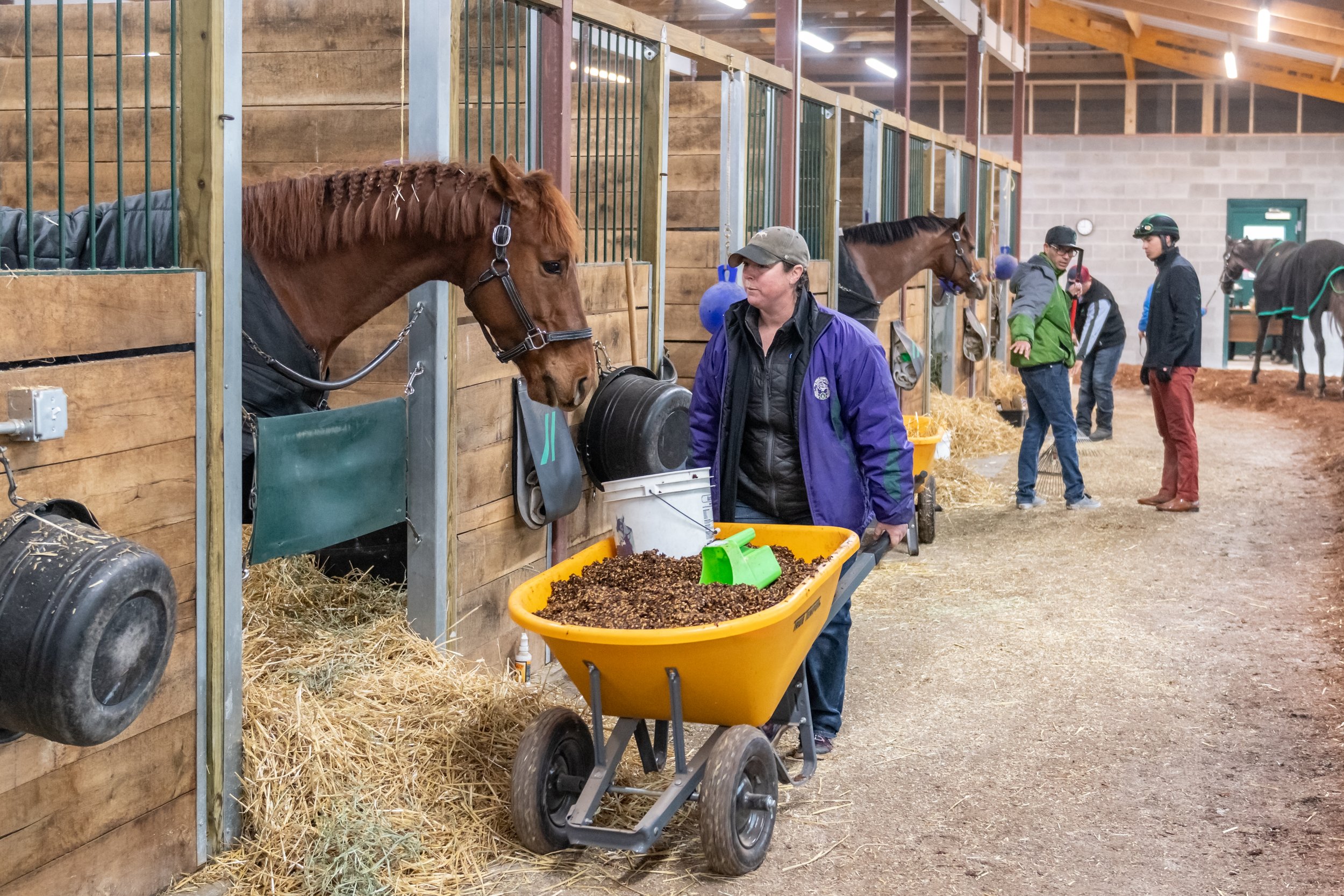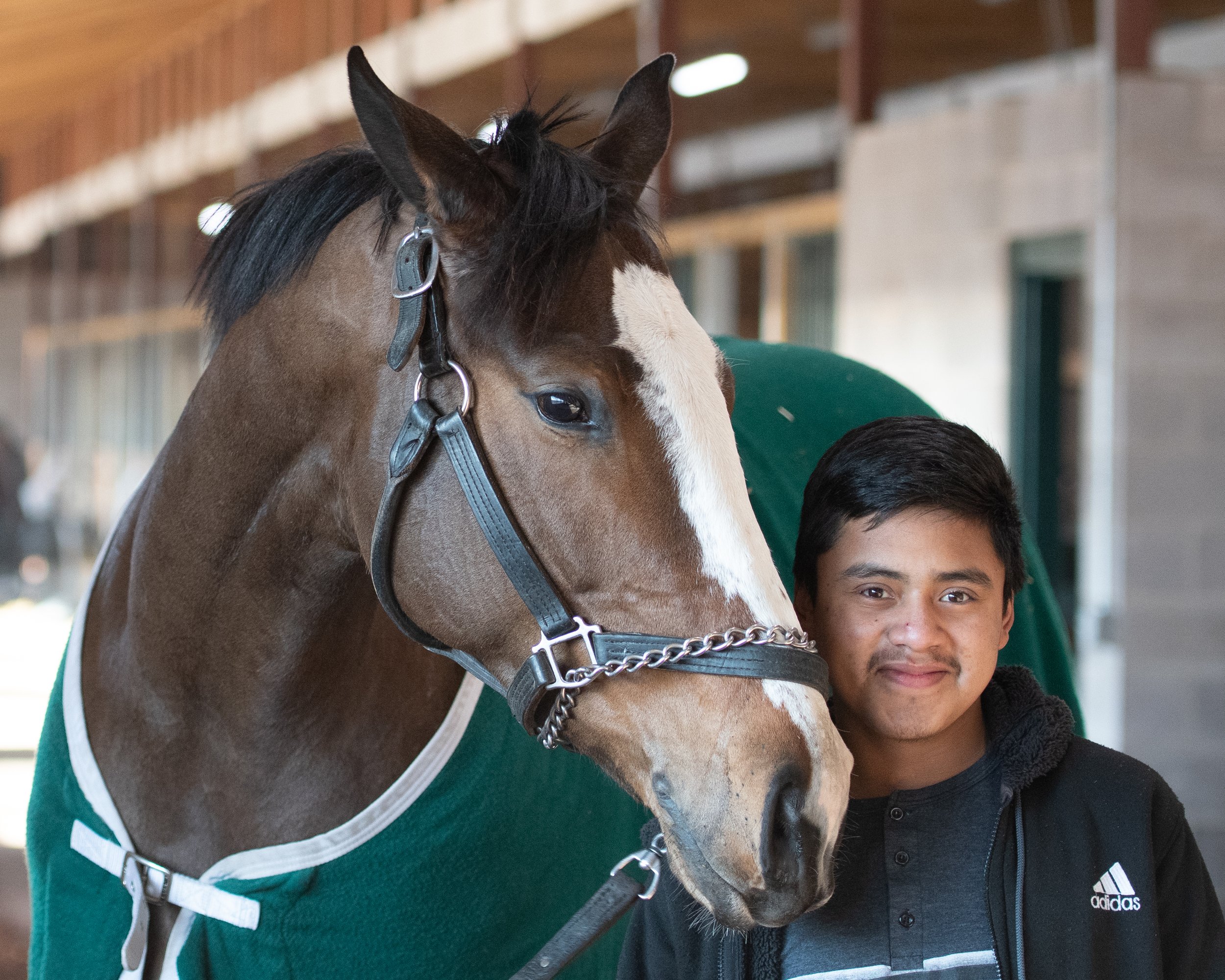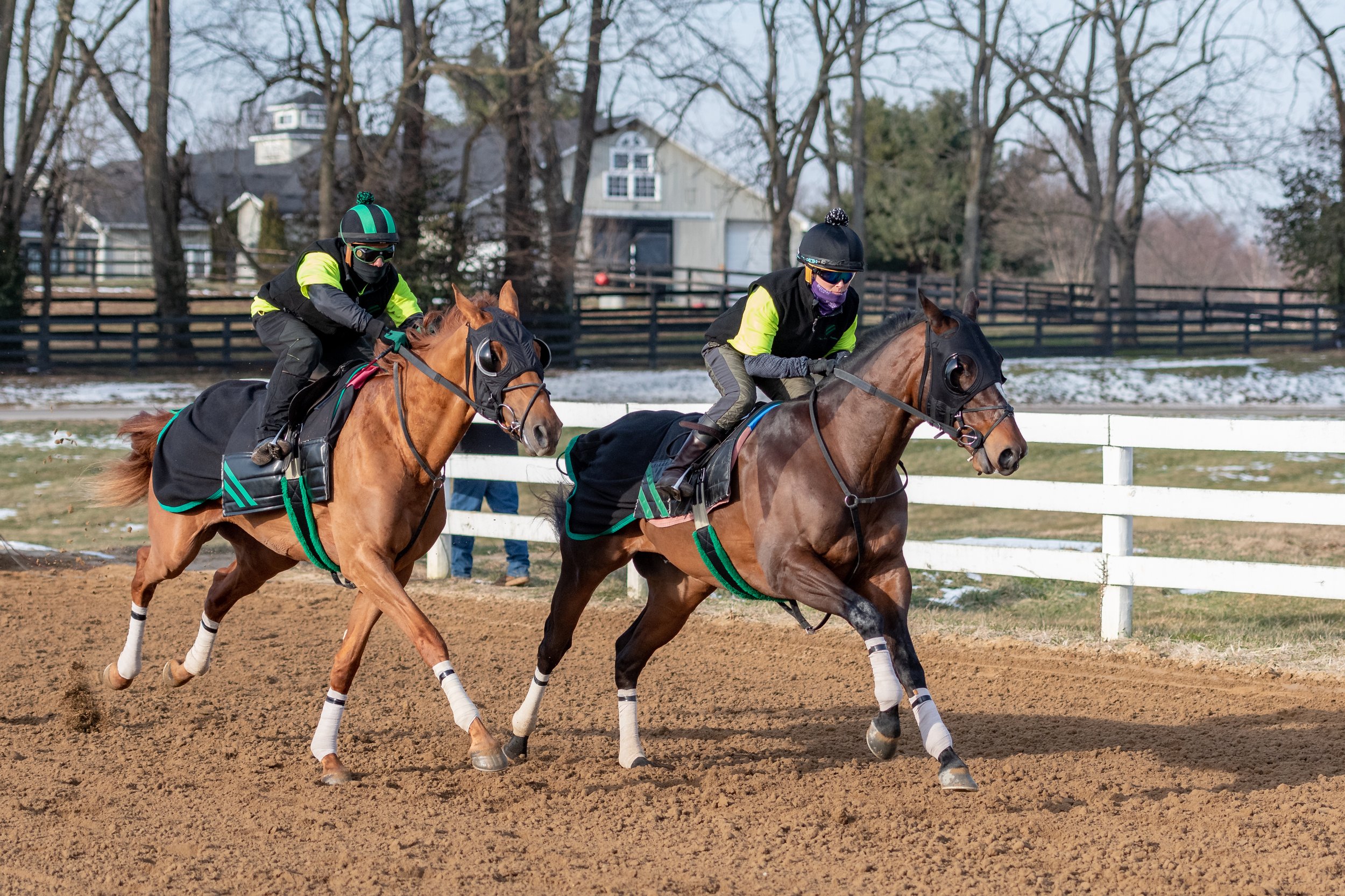Graded Stakes Winning Owners - Bill and Tammy Simon (WSS Racing) – Brightwork
Article by Bill Heller
Bill Simon, the former president and CEO of Walmart, quickly learned the difference between Walmart and racing. “There’s no everyday low pricing in horse racing,” he laughed.
Simon was at Walmart from 2006–2015. “Do I miss it?” he said. “I miss the people. But I don’t miss a million and a half people reporting to me. When I left Walmart, I was looking for something to share with my wife Tammy. She grew up on a farm in North Carolina.”
Thoroughbreds seemed like a good fit. Success came surprisingly quickly.
“We’re very methodical,” Simon said. “I try to work with good people.”
He certainly has two good people—his trainer John Ortiz and his bloodstock agent Jared Hughes. Oritz said his connection with the Simons “has been life-changing. They’re so supportive. They make me better, not only as a trainer, but also as a person.”
Ortiz knows he’s working with a remarkable person.
Born in Manchester, Connecticut, Simon graduated from the University of Connecticut, earning a Bachelor of Arts in economics and an MBA in management. While in college, he made his first trip to a racetrack, going to Saratoga Race Course.
He served in the U.S. Navy and Naval Reserves for 25 years, receiving commendations for combat service in Grenada and in Lebanon as part of a multinational peacekeeping force. At Walmart, he was instrumental in the company’s pledge to hire any returning veteran.
Before Walmart, Simon worked at several global companies including Brinker International, Diageo, Cadbury-Schweppes, PepsiCo and RJR Nabisco. He developed and launched Smirnoff Ice in the United States.
In the public sector, he was secretary of the Florida Department of Management Services, dealing with health care benefits, human resources, the Florida retirement system, facilities management and real estate from 2002 through 2004.
From 2018–2020, he served as chair of the Defense Business Board for Defense Secretary James Mathis. He is currently a senior advisor to the investment firm KKR and is the founder and president of WSS Venture Holdings.
Because of his vast experiences, Simon felt it unnecessary to hire a top-tier trainer and is very happy he chose Ortiz and Hughes. “I’ve already done a lot of things in life,” Simon said. “I traded spreadsheets and profits and losses statements for pedigrees and Racing Forms. It starts with two years trying to figure out where we could operate in this business. We started with claimers as everybody does. Then we focused on buying young horses.”
He’s delighted he has Ortiz and Hughes on his team: “I’m learning from Johnny and Jared. I have some things to teach them, too. I know how to run a business. This is a hard business. We grow together. Jared is a good horseman. John is an incredibly intuitive horseman. We have a better chance because we’re doing the work together. A lot of it is good, hard work.”
The work has paid off. Bill and Tammy found two relatively cheap stars. Barber Road, named for a road in North Carolina, cost $15,000. He broke his maiden in a $30,000 claimer. Simon told Molly Rollins in a March 8, 2022 story in the Blood-Horse, his rationale for the drop-down after Barber Road finished a distant fourth in a maiden special weight debut: “We knew he was special, but we thought, well, you know a $15,000 weanling running in a $30,000 maiden claimer—no one is going to take him; so why not give him a really good blow against an easier crowd and get things started? And that’s what we did. You have to be brave to take a $15,000 horse running for $30,000.”
After a 6 ¼-length romp in a starter allowance, Barber Road took the Simons on the 2022 Kentucky Derby trail, finishing second in the $200,000 Lively Shively Stakes, second in the $250,000 Smarty Jones Stakes and second again in the Gr. 3 Southwest Stakes. He was beaten just a half-length when third in the Gr. 2 Rebel, and finished second again in the Gr. 1 Arkansas Derby.
That led him to the 2022 Gr. 1 Kentucky Derby. He rallied from far back to finish sixth. “We had a huge Kentucky Derby party,” Tammy said. “It was really a neat thing for everybody. It was great. That meant so much to me and my family.,”
Barber Road finished seventh in the Belmont Stakes and most recently was fourth in the Gr. 3 Blame Stakes at Churchill Downs, June 3. He’s made just under $800,000.
The Simons’ undefeated two-year-old filly Brightwork, who upped her record to four-for-four by winning the Gr. 1 Spinaway Stakes at Saratoga September 3, cost $95,000 and has already earned $444,051. She’s never been the favorite in any of her starts, including a five-length romp in the Gr. 3 Adirondack Stakes before the Spinaway.
“I kind of like not being the favorite,” Tammy said. “That little filly has been amazing. To watch her come down that stretch at Saratoga—it was such an incredible feeling. Her breeders were also there with us. I turned around and every one of us was crying. It was John’s first Gr. 1 and our first Gr. 1. It was really special. She’s a diva. She knows she’s special.”
Her husband said he wasn’t too nervous before the race: “Whenever I get nervous, Johnny tells me in poker, you don’t know what other people’s hands are, but you know your hand. I loved my hand.”
After the Spinaway, he said of her half-length victory at Saratoga, “I never imagined we’d win at a place like that. Holy cow! I’m excited to see what she does next.”
Graded Stakes Winning Owners - Michael Dubb – Therapist
Article by Bill Heller
Michael Dubb’s near 50-year voyage at Saratoga Race Course has been unique and complete. In 1973, at the age of 17, he slept in a van because he couldn’t afford a room to attend the races the following day. In 2021, the 65-year-old multiple leading owner in New York, who watches the races from his box seat, saw the opening of his Faith’s House, a daycare center at Saratoga Race Course for the children of backstretch workers that he built and donated so those children had an option other that sleeping in their parents’ car or spending their summers apart from their parents. Faith’s House is named for his mother.
Twenty years earlier, Dubb donated the materials and built Anna House, a daycare center at Belmont Park named for the daughter of late owner, Eugene Melnyk, who contributed $1 million to start the program. Anna House was the first program of any kind offering daycare for children of backstretch workers. Dubb has contributed renovations for both facilities.
Michael Dubb’s legacy won’t be the races he won, but the lives he changed. “It means a lot to me, more than winning races,” he said. “In racing, you need a foundation to win races. These kids needed a foundation for their lives.”
His would be a good one to emulate.
The van he took to Saratoga was the same one he used for his fledgling landscaping business. “I bought my first landscaper when I was 16,” he said. “I slept in the van for a couple summers at Saratoga. I was in my van at Congress Park, and I got to listen to Richard Nixon resigning that August (1974).”
In 1985, Dubb began The Beechwood Organization, which has become the largest New York developer of family and multi-family attached housing. Beechwood has built more than 10,000 homes in 80 communities in New York City, Long Island, Saratoga Springs and North Carolina. Professional Builder magazine said Beechwood ranked 54th out of 240 housing giants and number 3 in New York in 2023. Dubb’s son Steven, is now a key player in Beechwood.
Dubb, a lifelong Long Islander, has spent much of his life giving back. He built homes for Long Islanders after Superstorm Sandy. The American Cancer Society, the American Jewish Committee, Family Service League, Rockaway Development & Revitalization Corporation, Mid Island YMCA/Jewish Community Center, Suffolk YMCA/Jewish Community Center, Tilles Center and Networking Magazine have honored Dubb for his philanthropy and community service.
While he has been a partner of top Thoroughbreds Monomoy Girl, British Idiom and Uni, he’s an astute horseman who has made a ton of claims—none more impressive than Therapist.
“He’s a pleasure,” Dubb said. “I competed against this horse for many years. I tried claiming him for $25,000, but I lost the shake. They put him in for $50,000. I got him. He’s just a hard-hitting older New York-bred horse. I’m fortunate to own one.”
Exactly three weeks after Dubb lost his $25,000 claim on a shake, Dubb claimed the eight-year-old gelding for $50,000 on June 20 at Gulfstream Park when he finished third as the 2-1 favorite. Switched from Geoge Weaver to Mike Maker, Therapist won a starter allowance on synthetic by 4 ½ lengths and the Gr. 2 Pan American on turf at Gulfstream.
Sent to Churchill Downs, Therapist was a wide eighth in the Gr. 2 Louisville Stakes. At Ellis Park, he was second by a head in a $160,000 stakes.
In the $600,000 United Nations at Monmouth Park, July 22, Therapist won his first Gr. 1, scoring by a length and a half in the mile-and-three-eighths stakes under Javier Castellano. In his last start, Therapist finished eighth in the mile-and-a-half Kentucky Downs Turf Cup. Dubb can live with that. Therapist’s U.N. score earned $360,000—more than seven times what Dubb paid to claim him.
Of course, all his claims weren’t as successful.
At Anna House and Faith’s House, all the children are given the tools to be successful. “We give them confidence to compete,” Dubb said.
Dubb conceived the idea of Anna House after Hall of Fame jockey Jerry Bailey told him that backstretch workers’ kids were sleeping in cars. “It just wasn’t right,” Dubb said. “We recognized the need for daycare. I worked with NYRA to find a location. It took about 18 months. We got Anna House built in seven weeks.”
More than 1,000 kids have passed through Anna House, which offers 365-daycare from 5 a.m. to 6 p.m. There are programs for infants from 5 a.m. to 1 p.m. and a school-age program from 3 p.m. to 6 p.m. Parents of the families are asked to make a “very small donation,” Joanne Adams, the Belmont Child Care Association executive director, said. “We write grants to assist us, and corporations help us.”
Asked of Dubb’s ongoing contributions to both Anna House and Faith’s House, Adams said, “It’s hard to imagine any of this without Michael.”
She continued, “He has a big heart. He cares about the people around him. He has shared his early life and what he did and how he worked hard to get where he is. He’s just a very caring person, exceedingly bright. He understands business, and he understands people. He’s happy when the people around him are happy.”
Dubb says of both daycare centers: “They’ve exceeded my wildest dreams, to see how incredibly happy the children are.”
John Alexander Ortiz - the trainer of Barber Road - has plenty to look forward to.
MY WAY
By Ken Snyder
John Alexander Ortiz has two favorite memories from his first Oaklawn Park meet in 2017: listening to Frank Sinatra’s signature song, “My Way,” on the eight-hour drive back to Lexington from Hot Springs, Arkansas after the meet and getting some advice that he has never forgotten.
“Steve Asmussen and I were in a race together. He ran third and I ran fourth; and [as] we were walking back to check our horses after the race, we happened to walk side by side. Steve and I didn’t really know each other that well at the time, but I like to talk a lot, so I asked him, ‘What advice would you give a young trainer?’ He looked at me and said, ‘Stick to your guns. Nobody knows your horses better than you do. Don’t let anybody else tell you where to run them. Don’t change your system. Be who you are.’”
Ortiz may have also interspersed “My Way” with whistling a happy tune on the way home. He saddled eight winners in 46 starts at Oaklawn, for a 17%-win percentage. That’s very respectable for a trainer in only his first full year on the racetrack. He went on to earn $688,013 for the year—an enviable figure for any new trainer.
“His way” and the advice he got at Oaklawn also produced impressive results this past year: $2,614,398 compared to $1,094,092 in 2020. Surpassing even that accomplishment, perhaps, is an innovation in barn management that may have other trainers shaking their head in amazement, others pretending they didn’t hear about it, and still more near Ortiz’s barn keeping a close watch on their own barn help.
“I quit paying the help by the number of horses that grooms were taking care of. Instead, I gave everybody a yearly salary. If you’re doing six horses, or seven or eight, or four horses, you’re going to get a yearly salary—the same paycheck,” he said.
The salaried system solved a chronic short-term problem of finding barn help and the long-term problem--equally, if not more importantly—of keeping barn help.
The closure of Churchill Downs this past summer for the new turf track installation was the time for Ortiz to launch his system. He is based in Lexington and had stabled during summers at Churchill Downs. Barn help didn’t want to travel to Colonial Downs in Virginia where Ortiz and many other trainers had to locate. “We went there with 27 horses and only two grooms. We didn’t have any hotwalkers,” he said. Aside from the horses, the barn was Ortiz, three exercise riders, an assistant trainer, a foreman and the two grooms.
With all-hands-on-deck required, the traditional pay structure of pay-per-head went out the proverbial window followed by job descriptions.
Ortiz described the new system as “a test run that was scary.
“Nobody was assigned a specific horse. My brother [Daniel, Ortiz’s assistant trainer] and the grooms would walk down the line and muck stalls together. Daniel and the exercise riders would walk hots, help catch horses and fill the water buckets.
“When everybody was secure in knowing they were going to get paid a certain amount, they were happy to do whatever it took to get the job done.”
The system continued for a variety of reasons, primarily among them that it worked. The barn workers loved it. It also solved issues and problems that have always existed in racetrack barns.
“Normally, a groom gets a job taking care of five, six, seven horses; and they get paid by the head. Usually, it’s about $110, $120 per head per week. I realized that there was a lot of juggling keeping track of it—how many horses this guy did, how many horses that guy did—and you can get a little bit of jealousy: ‘Why is that guy grooming four horses, and he’s grooming seven?’” said Ortiz.
The same check for grooms eliminates all that,” he said. Likewise, all hotwalkers, exercise riders, foremen and assistant trainers are paid the same.
John and Daniel Ortiz
Salaries also minimize one hiring obstacle: Ortiz has had to turn away people who have told him, “If I can’t groom seven horses, I can’t work for you.”
Post-Colonial Downs, and with a full complement of help, the system and benefits from it continued. “With a salary, they’re willing to help me do extra things they normally haven’t had time for or don’t want to do because ‘it’s not my job.’ Those words don’t exist in my barn,” said Ortiz.
He freely admits he is “over-paying” barn help. “I’ve had grooms make up to $1,200 a week in pay. If they want to do laundry, I’ll tack on $200, do night watch: $200, walk a horse over and back for a race: $40.
Workers traveling with Ortiz from meet to meet can make the following annually: exercise riders: $40,000 to $42,000; grooms and foremen: $34,000 to $36,000; and hotwalkers: $24,000 to $26,000.
“Not only do they have a good yearly salary, but at the end of the year, I gave everybody a bonus. I know how hard everybody worked last year. I know how hard they worked for me.”
The key question—Are you getting it back in win totals and earnings?--prompts an instant answer from Ortiz: “One-hundred percent, yes.”
The exact number, of course, is incalculable.
“I want to believe we’re having a lot more success because everybody in my barn is a happy worker. Everybody wants to see us succeed. They support me because I support them. I think that’s where I get the biggest return.”
“Success” in 2021 is understating it. The increase from 2020 was just short of a whopping 139 percent—more than enough to take on higher barn pay.
If any other trainer has paid salaries rather than weekly, by-the-head wages, the affable Ortiz hasn’t heard of it. “It makes more sense to me to have reliable help than a bunch of people randomly here, coming in to get a paycheck. When everybody is secure financially, people seem to concentrate on what they’re doing.”
The change in how he paid help also comes from experience. Since being on the racetrack, Ortiz (not related to jockeys José and Irad Ortiz, as he is often asked) has worked every job in the barn including exercise rider. He knows well the ups and downs of financial fortune and constant worry about finances. “Hard-working people—the ones that really put their blood, sweat and tears into this—deserve to be secure financially. They have families.” Losing horses from the barn through a claim, for example, and the pay that goes with it, he added, is the “one thing that scares the help on the ground.”
John Ortiz and Sandra Washington, barn foreman
Ortiz is the son of former jockey Carlos Ortiz, who rode in Colombia before moving with his family to the U.S. to ride here. Embarking on a career in 1988, Ortiz rode at New York and mid-Atlantic tracks. A spill that broke his femur ended his jockey career but led to exercise riding for Bill Mott for 15 years. Working for Mott brought his son John into contact with the legendary trainer.
As a small boy, he would accompany his father to the racetrack. “I was introduced to racehorses through Bill’s barn,” Ortiz recalled.
“One summer at my dad’s birthday barbecue with trainers, jockeys, agents, etc., we were sharing horse stories, and Bill Mott looked at me across a table and asked, ‘What are you doing this summer? Why don’t you come and work for me?’”
Ortiz was 15 years old and walked hots for Mott that summer as well as on weekends. He said he fell in love with racetrack barns that summer, but with “an itch to ride horses like my dad. Bill got me on my first racehorse.”
He also wanted to know everything about barn operations—the foundation for his career as a trainer. Even though he did not groom horses, he talked to those who did to learn everything he could about it. “I was always interested in becoming a trainer. Even if I was a jockey, I knew it wouldn’t be long term because of my weight.”
As a kind of “plan B” to a jockey career, Ortiz spent a year at a trade school learning to be an auto mechanic. Jobs, however, were scarce after his training.
“My family moved to Ocala in Florida. I stayed back, and I couldn’t find a job as a mechanic. My dad said, ‘I left the helmet. I left some boots and the vest. Put ‘em on and go freelance. If you want to stay in New York, find your way.’”
“I breezed my first horse for Dominic Galluscio. He taught me how to breeze and gave me an opportunity.”
When Mott returned to New York from a winter in Florida in 2006, Ortiz went to work for him as a foreman and exercise rider. “I loved working for him. I learned horsemanship, which is rare nowadays,” he said.
As important as Mott was to him, his former assistant trainer, Leana Willaford, was the most important influence. “Being under Leana, I learned all the tricks of the trade. I still use techniques and knowledge she gave me, and I’m forever grateful for that.”
In 2008, Ortiz went to work for Graham Motion at Palm Meadows in Florida and Fair Hills in Maryland and got his assistant’s license under the British trainer. From Motion, he said “I learned organization…what it takes to run a barn.
“Everybody had a task, and it was all charted. How he ran his barn was like a business. Everything I do is on the computer, on a chart.”
After a year-and-a-half with Motion, Ortiz went to work as an assistant for Kellyn Gorder. “I’ve worked for some really great trainers—Bill Mott and Graham Motion—but working for Kellyn was the best experience in my lifetime.
David Vincente
“I got to experience a new side of horses: the yearlings, the two-year-olds, and working for farms like WinStar, Dixiana and Three Chimneys.
“I was able to see horses coming off rehab and how to develop the babies. That was one of the key elements that I learned from Kellyn.”
The best thing he ever learned from Gorder, however, may have been something intangible that he carried into his own stable and that may have been a contributor to a switch to paying salaries to barn help. “We would disagree on stuff, but he told me one day, if we didn’t disagree, we weren’t working together. His ideas became my ideas and my ideas became his; and again, that’s where I developed a mentality that this is a team effort.
“It’s not about my name on a big board across my barn.” He means that literally.
“My logo isn’t letters of my name; it’s two lines, two slashes. My hotwalkers, my grooms, my riders, my foreman Sandra Washington, assistant trainers Lindsey Reynolds, Felipe Nichols, and Daniel Ortiz—we all work here in parallel with each other. We don’t cross each other. I’m one of the green stripes, they’re the other, and we’re always side by side.”
Five years after the advice from Steve Asmussen, Ortiz refers to it often. “In 2021, there was a little dry spell in the summertime. I’m walking with my head down kicking rocks and thinking, ‘What am I doing wrong? I gotta change the feed program? We gotta’ do something.’ And then that’s when Steve’s advice popped up in my head: ‘Don’t change anything; stick to your guns.’
“I stuck to what we were doing. It wasn’t that we were having a slow summer. We were having a successful summer, hitting the board in $100,000 races. We weren’t winning that much, but we were in the right races.”
Asmussen’s counsel came to mind again more recently. Mucho, who came to Ortiz’s barn in 2021, had never won at a distance over six furlongs and had never raced longer than seven. “I put him in a mile race [the Fifth Season Stakes at Oaklawn on January 15 of this year], and I had a lot of people ask me why I’m stretching him out. ‘You shouldn’t do that; he’s a sprinter.’ No, I’m sticking with my guns. ‘He’s going to go two turns.’ The horse got beat by a neck. I knew my horse. That’s where I was reminded of what Steve told me.”
Mucho, by the way, earned $335,090 in 2021 in 10 starts for Ortiz after earning $350,829 in three years over 19 starts.” The right races, indeed.
The goals? “This year at Oaklawn is to always win a couple more than the year before. We won 15 last year. This year, we’re looking at 20.
“We’re also going to focus on the Breeders’ Cup. That’s the main goal.”
Right now, Ortiz also has a horse on the Derby trail—Barber Road—who at time of writing, has now finished second in three straight stakes races, including an impressive late running performance in the Gr. 3 Southwest Stakes at Oaklawn Park in late January. “Pretty good for a $15,000 weanling,” said Ortiz.
Could Ortiz be singing “My Way” again after this year’s Kentucky Derby or Breeders’ Cup? We shall see.







